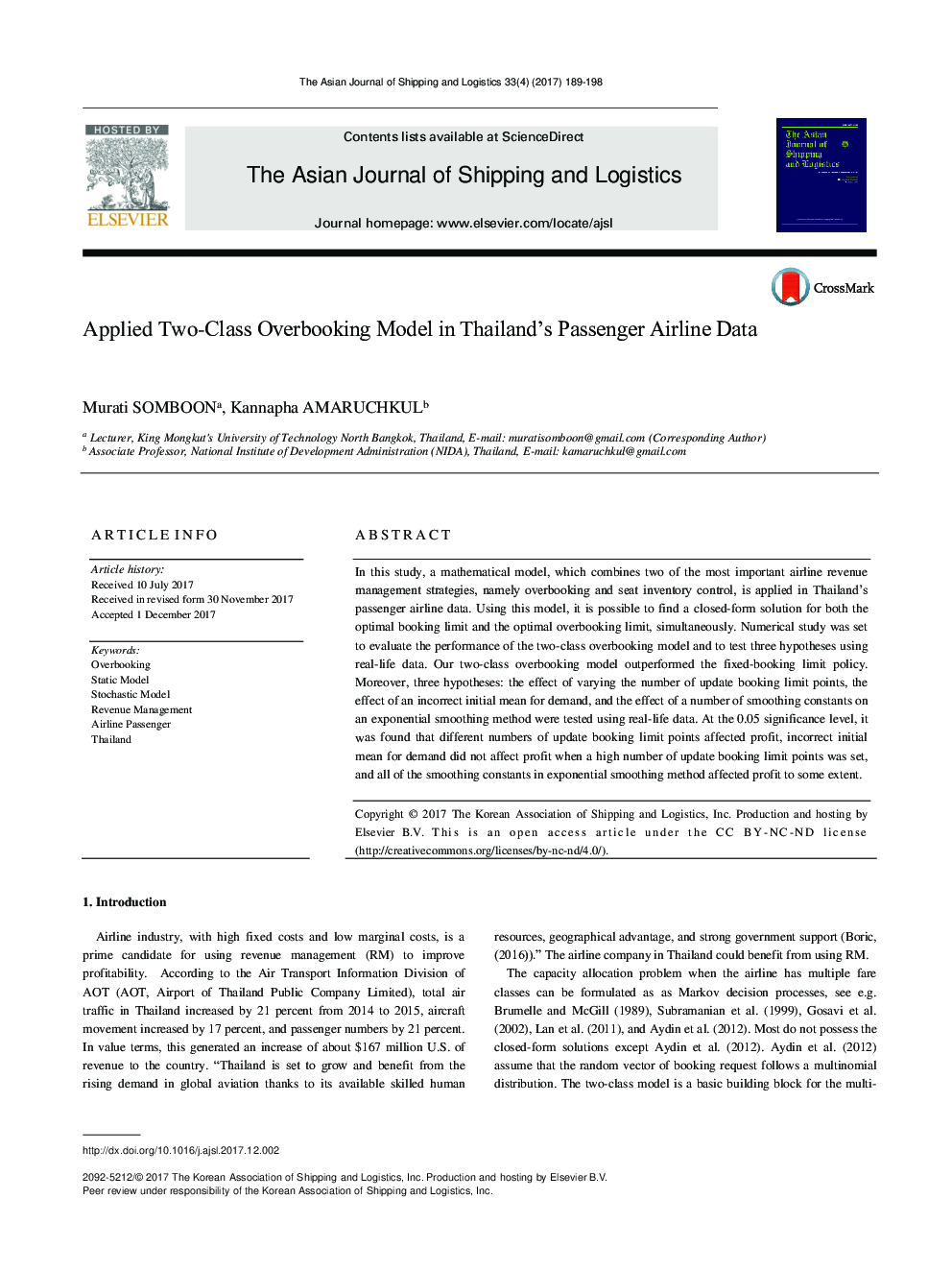| Article ID | Journal | Published Year | Pages | File Type |
|---|---|---|---|---|
| 7395937 | The Asian Journal of Shipping and Logistics | 2017 | 10 Pages |
Abstract
In this study, a mathematical model, which combines two of the most important airline revenue management strategies, namely overbooking and seat inventory control, is applied in Thailand's passenger airline data. Using this model, it is possible to find a closed-form solution for both the optimal booking limit and the optimal overbooking limit, simultaneously. Numerical study was set to evaluate the performance of the two-class overbooking model and to test three hypotheses using real-life data. Our two-class overbooking model outperformed the fixed-booking limit policy. Moreover, three hypotheses: the effect of varying the number of update booking limit points, the effect of an incorrect initial mean for demand, and the effect of a number of smoothing constants on an exponential smoothing method were tested using real-life data. At the 0.05 significance level, it was found that different numbers of update booking limit points affected profit, incorrect initial mean for demand did not affect profit when a high number of update booking limit points was set, and all of the smoothing constants in exponential smoothing method affected profit to some extent.
Related Topics
Social Sciences and Humanities
Economics, Econometrics and Finance
Economics, Econometrics and Finance (General)
Authors
Murati Somboon, Kannapha Amaruchkul,
